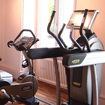TP8 LP
Upper-intermediate level
Description
Main Aims
-
To provide clarification and practice of Adjective clauses with WHO, WHERE, and THAT in the context of Psychology of lying
Subsidiary Aims
-
To provide gist and detailed reading practice using a text about Reasons why people lie in the context of Psychology
Procedure (39-52 minutes)
Ss will watch a short clip about the firs man who lied. They will be asked this question: What do you think happens in your brain when you lie? and Why do we lie? They will talk in pair and after some feedback, T will move on to the next stage.
T will distribute HO and ask Ss to stay on page 1. Ss are instructed to go through gist and detailed practices in assigned times of 2 and 5 minutes. The answers are checked in pairs and feedback will be given by T for each of the practices. Ss need to be asked exactly where they found the answer, since among the sentences containing the answers is the marker sentence that will highlight the TL.
The marker below goes on the board: They psychologist who was the head of the research team spoke with us about their research. The Ss are asked to find the subject of the sentence. Upon finding, it will be identified on the board and the Ss are asked to go to page 2 of their HO.
Ss are asked to go through page 2 of HO alone. After they are done, they will be instructed to check in pair and the answers are answer keyed on the board. After the answers are checked with the board and clarification over the meaning and form is given, the marker sentence and the other sentences will be drilled.
Ss are given HO 2 to answer the questions in the first part. They are asked to check in pair. T will correct error immediatelty if there are any at this stage. If there are any numbers that the Ss are struggling with, it will be taken to the board and rechecked. The exact same steps will be taken for the second part of the HO.
Ss are instructed to play the taboo game in pairs. Each pair is given a number of papers with vocabulary items on them. Ss are supposed to use the forms presented in order to get the other person to find the answer. T will take notes and if there are any errors, they will go on the board and corrected.
Ss are set in pairs to retell the complete story to a partner and discuss whether or not it is appropriate in the story of the character to have lied. If time, the Ss are asked to discuss what type of people use what type of lies regularly. First in pairs and then a smaller group (depending on the number of the students) as a whole class to feedback.
Ss will be settled. T will praise if any good language was used and possibly point them out on the board. Some errors that are made will go on the board in order to elicit the correct form from the Ss.

